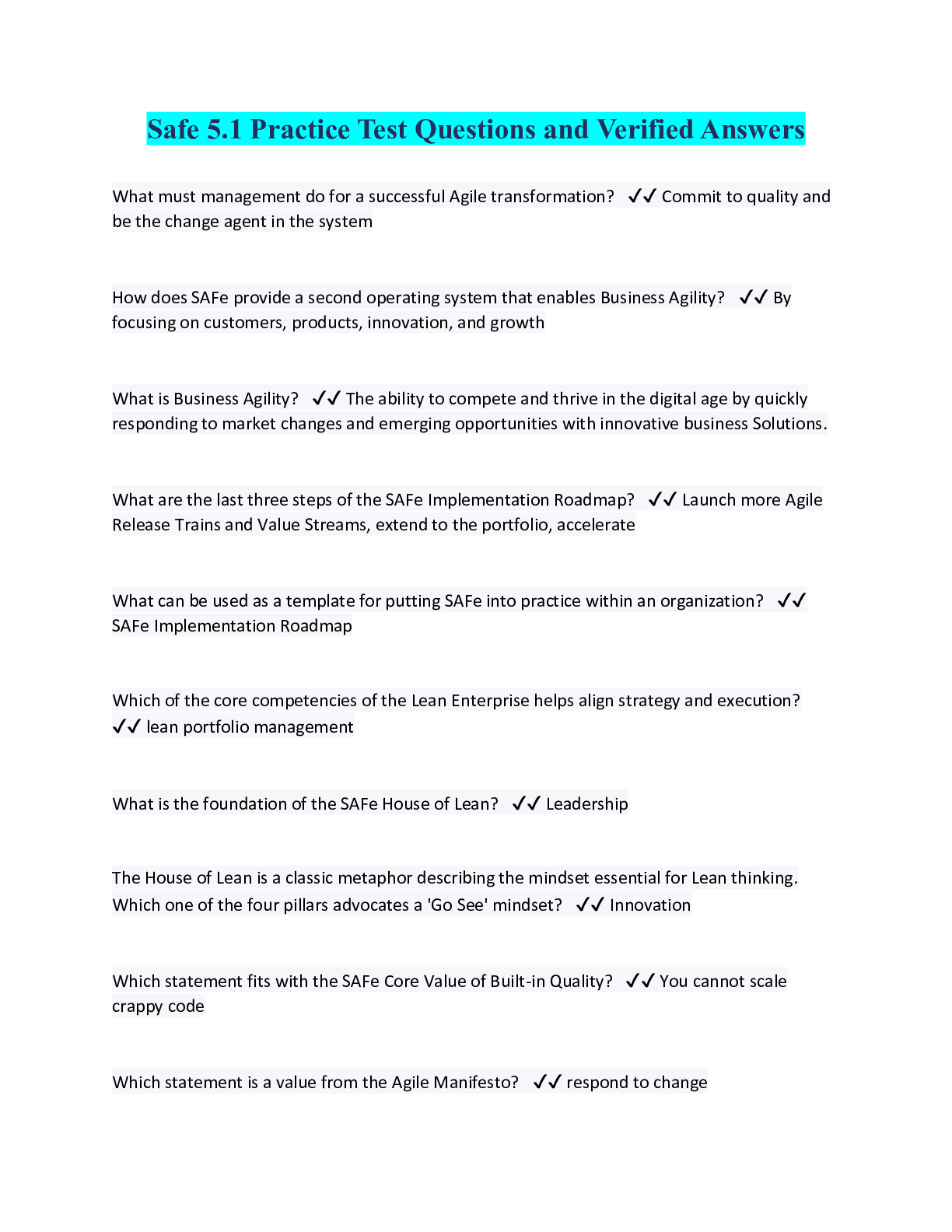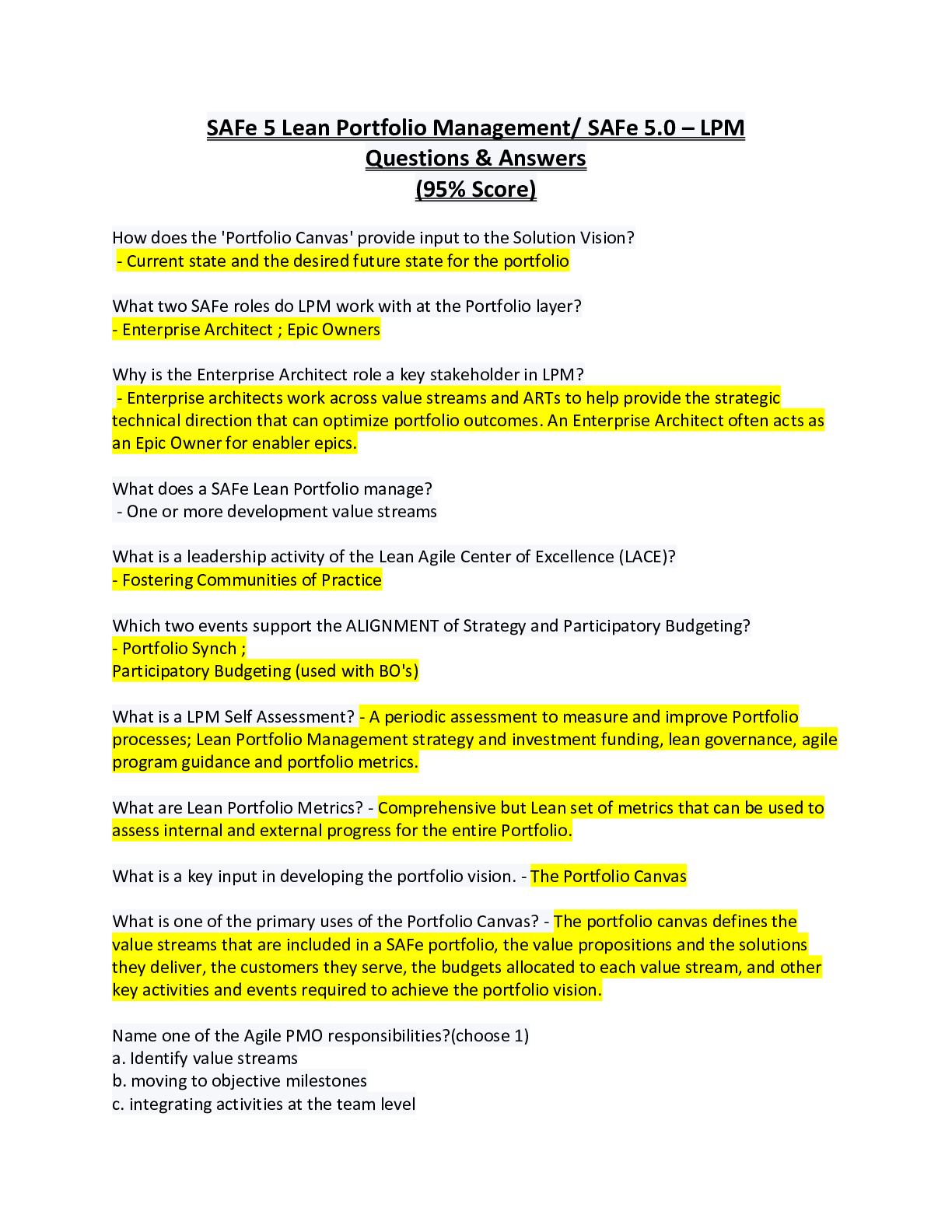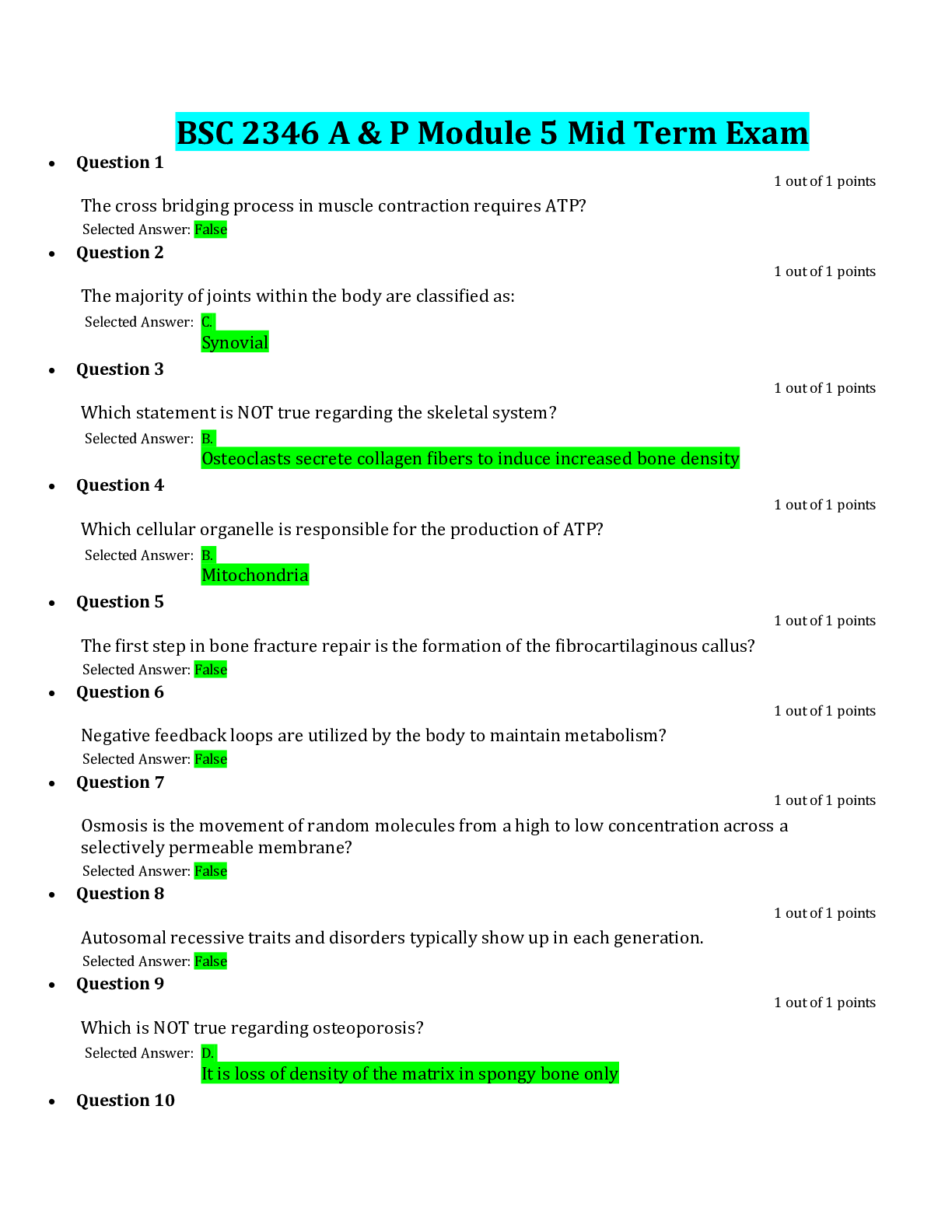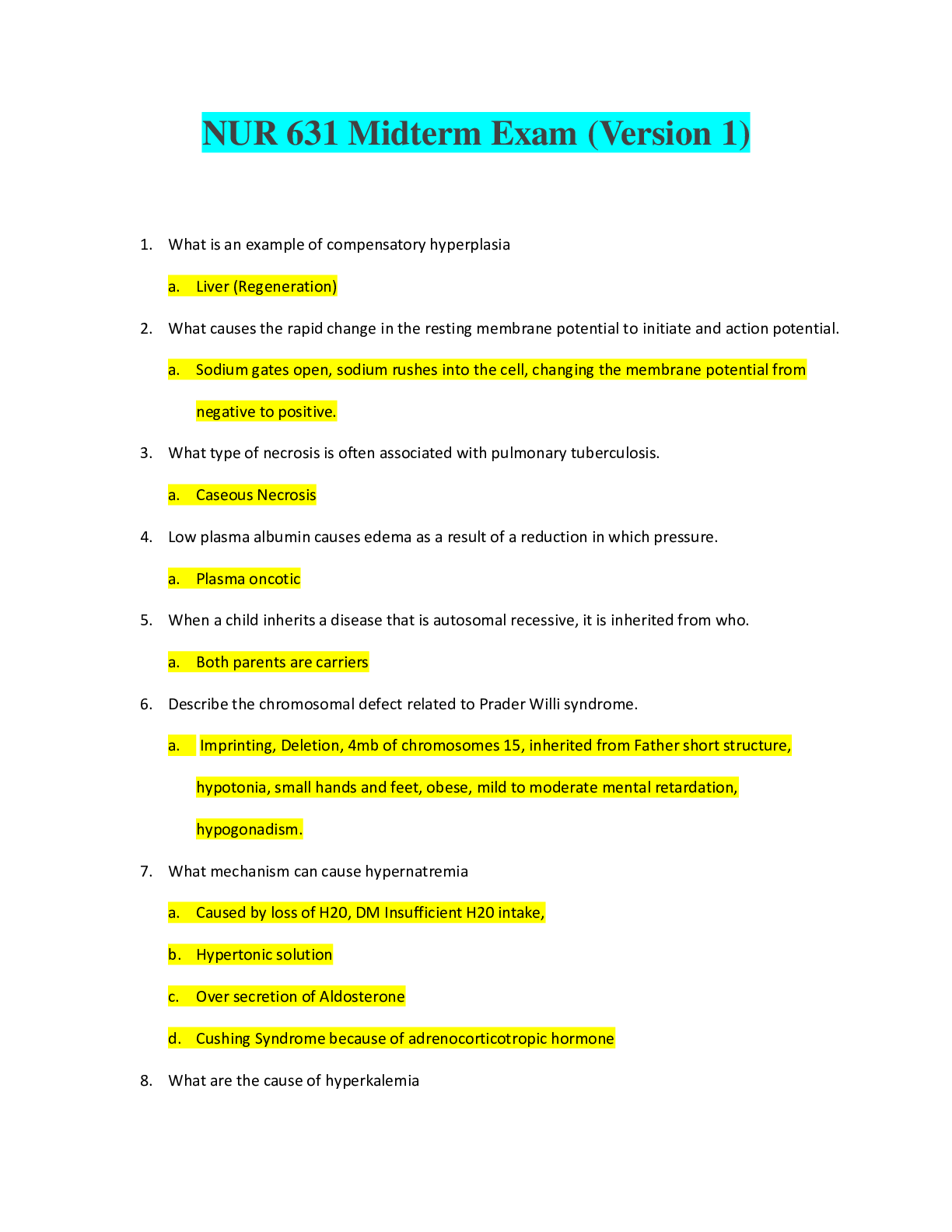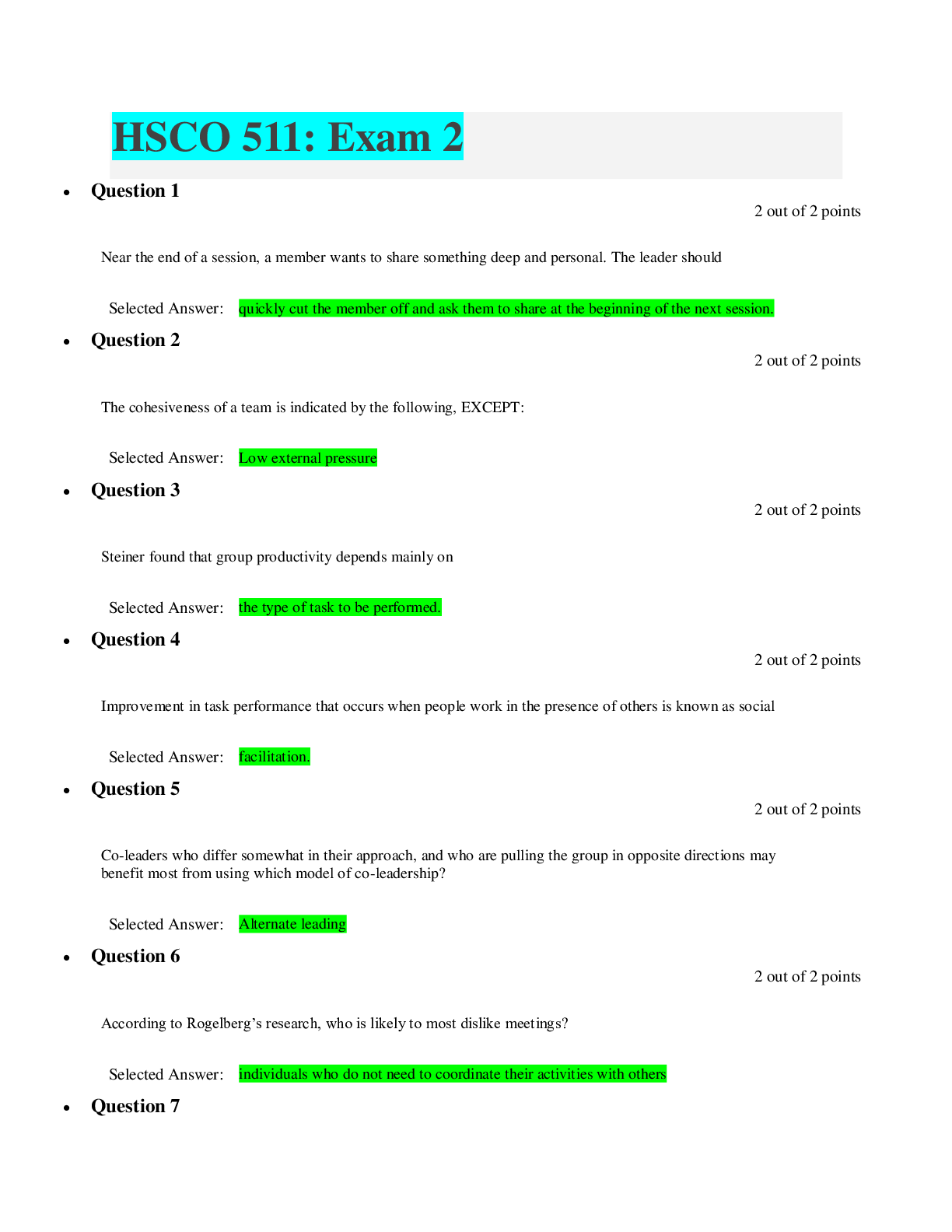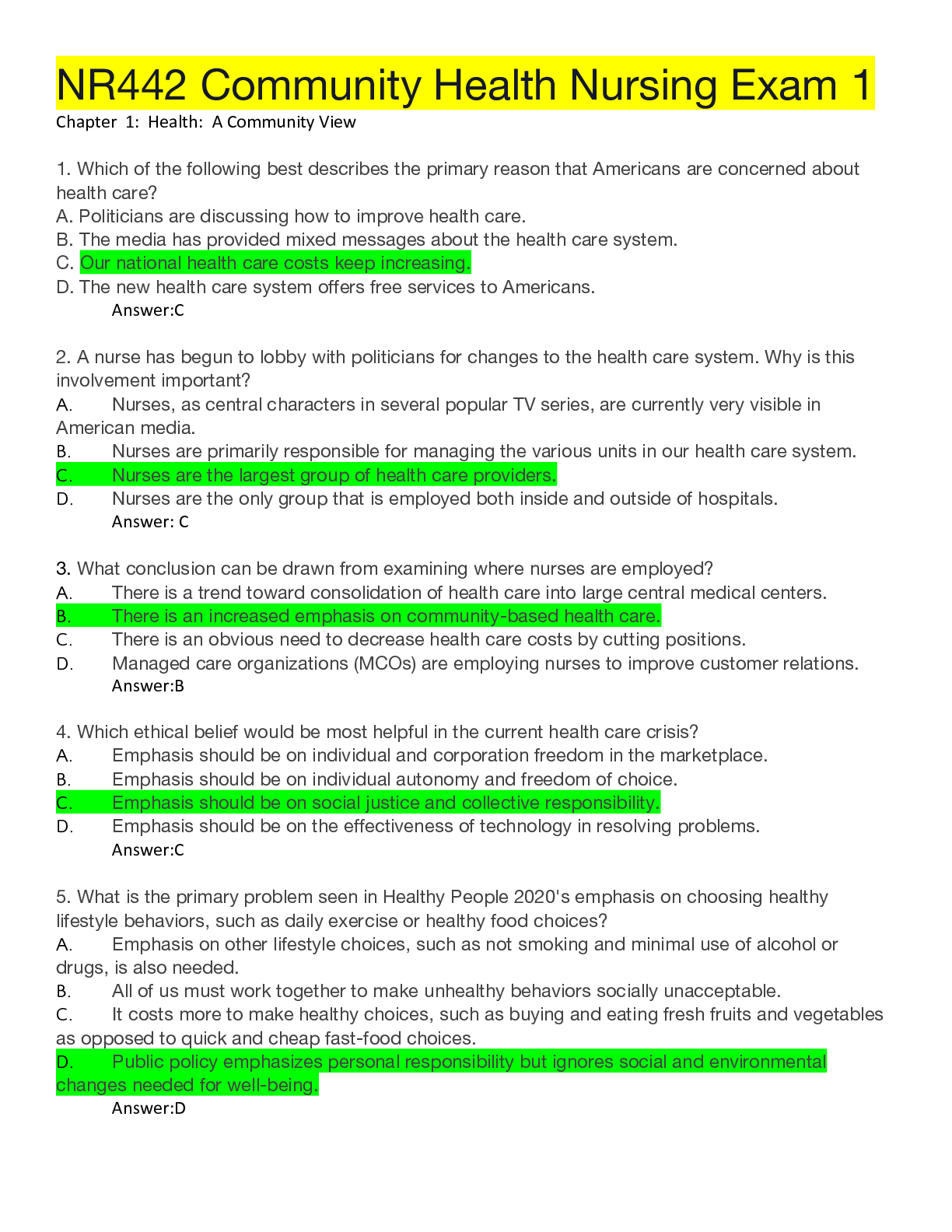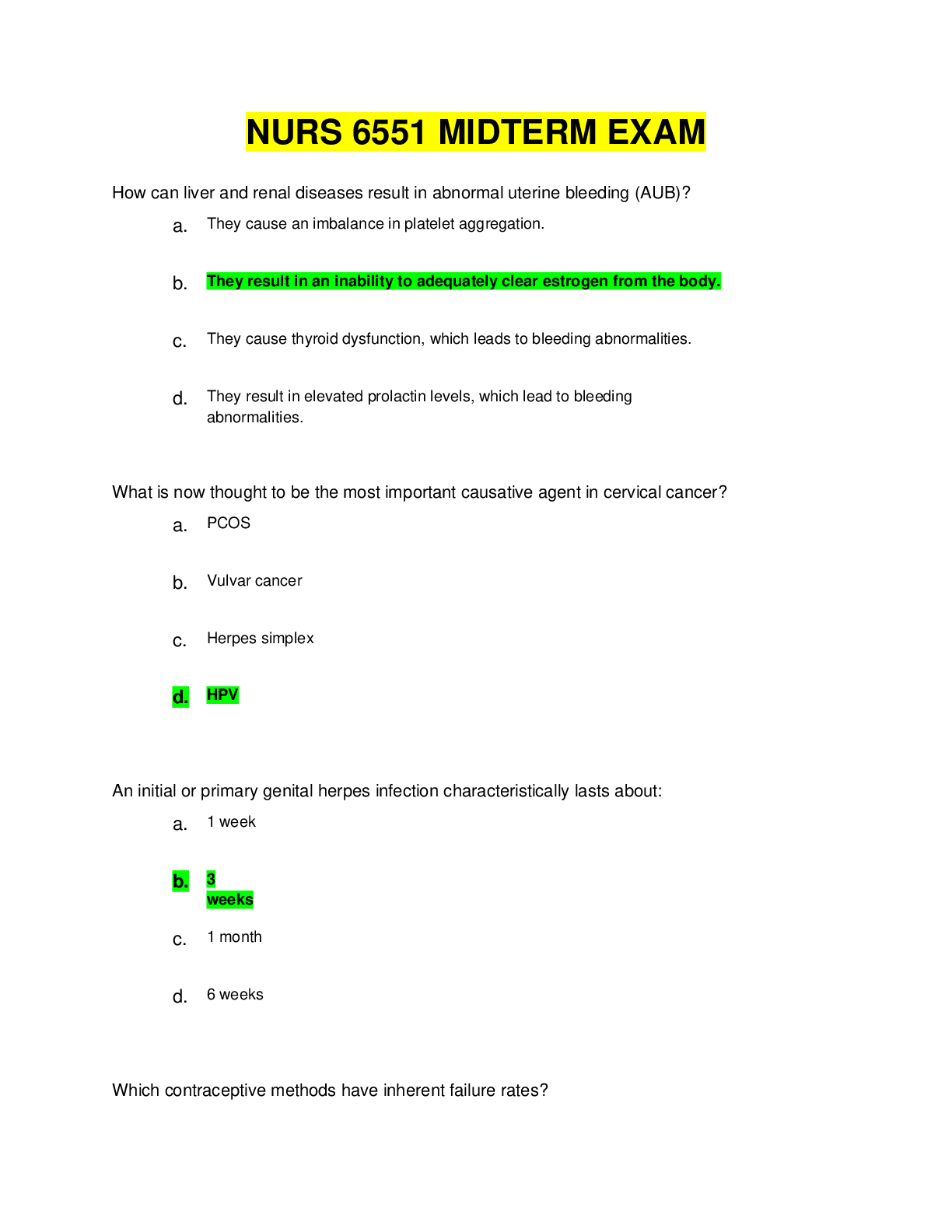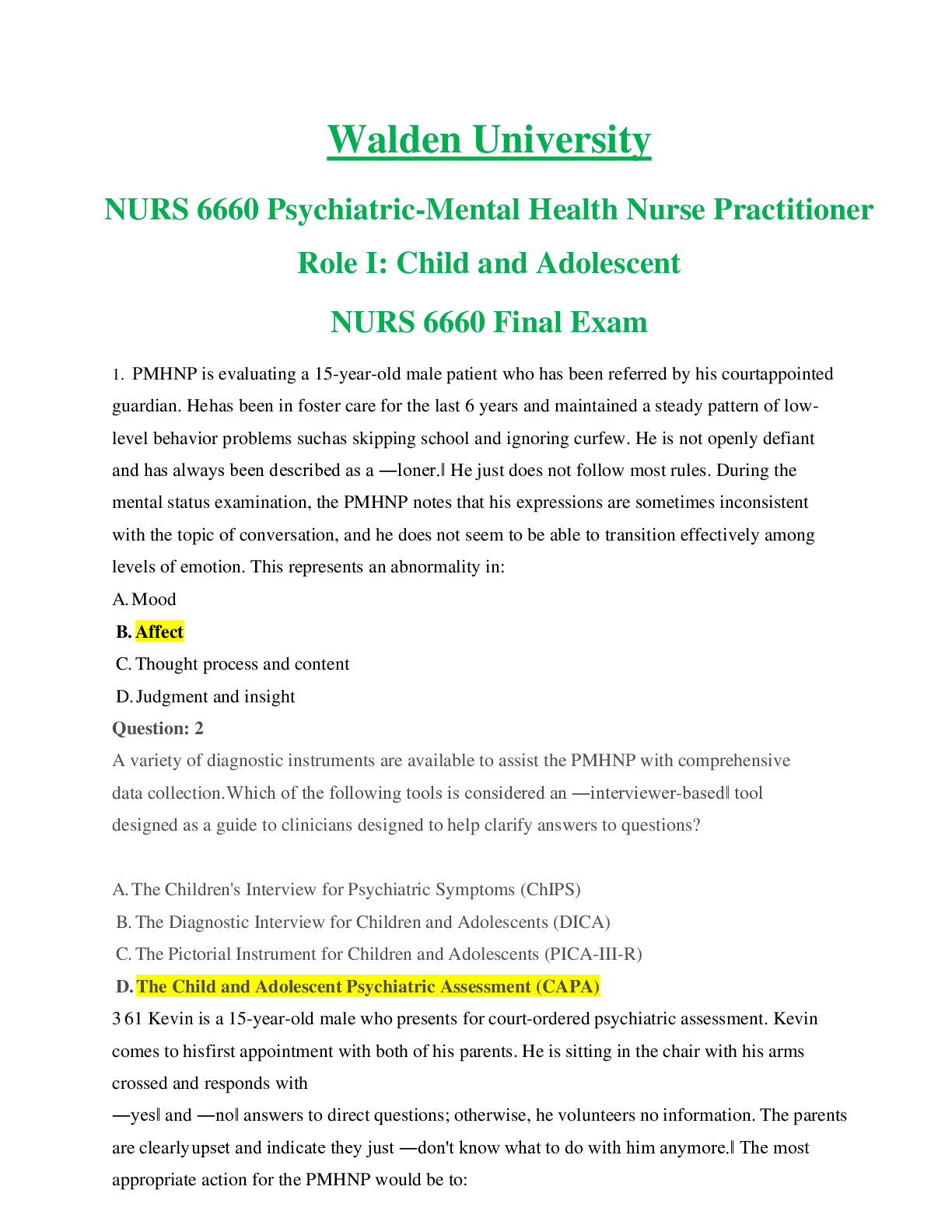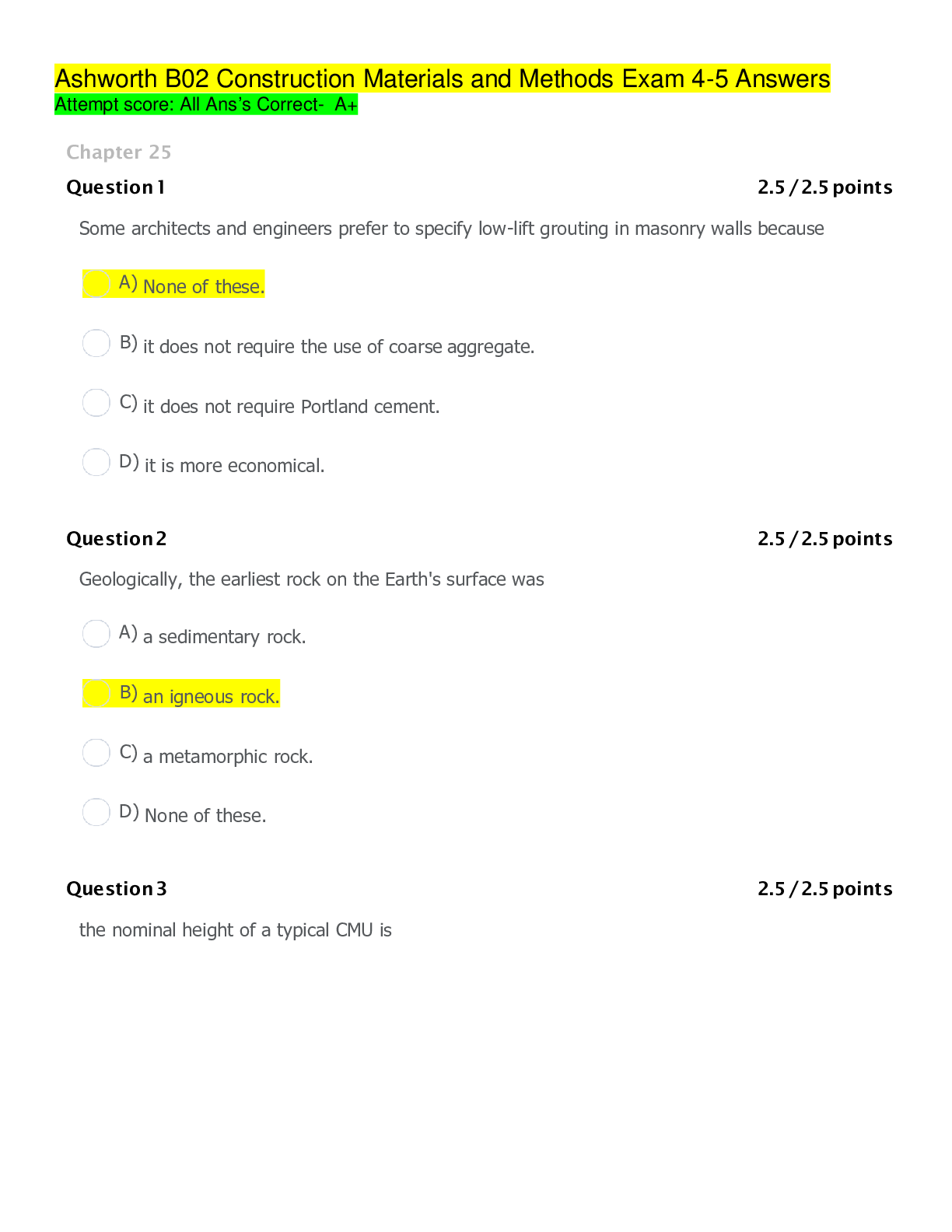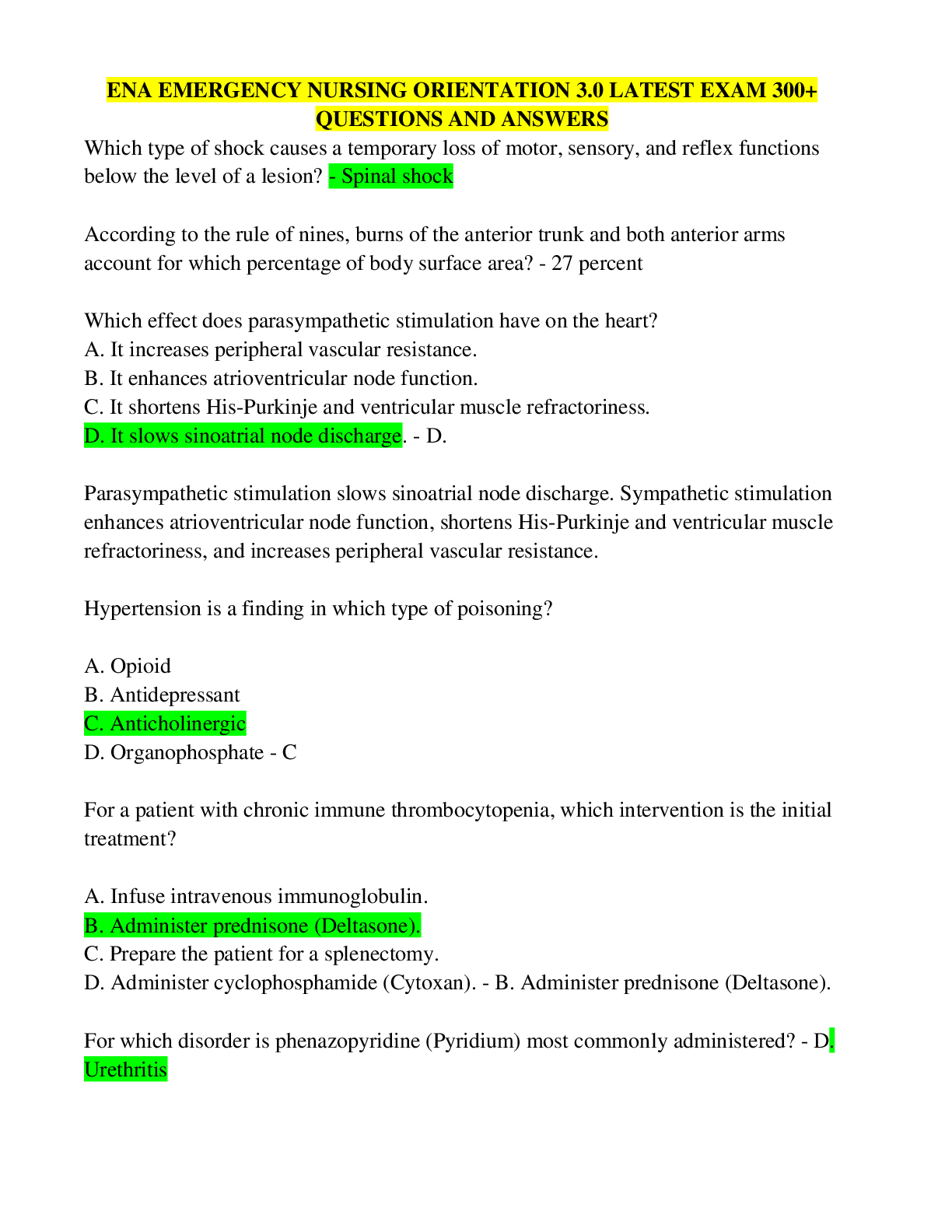Management > EXAM > Ashworth : B02 - Construction Materials and Methods Latest Exam 3 Answers_Graded A (All)
Ashworth : B02 - Construction Materials and Methods Latest Exam 3 Answers_Graded A
Document Content and Description Below
Ashworth B02 Construction Materials and Methods Exam 3 Answers Question 15 / 5 points Portland cement sets and gains strength by virtue of its chemical reaction with A) oxygen in air. B... ) water. C) aggregates. D) carbon dioxide in air. Question 25 / 5 points ASTM specifications classify Portland cement into five basic types, referred to as A) Types A, B, C, D, and E. B) Types I, II, III, IV, and V. C) Types X, Y, Z, p, and Q. D) Types pC1, pC2, pC3, pC4, and pC5. Question 35 / 5 points Which of the following materials is a pozzolana? A) Lime B) Fly ash C) Sand D) Portland cement Question 45 / 5 points Epoxy-coated bars are generally used in A) high-rise buildings built in warm climates. B) parking garages built in warm climates. C) high-rise buildings built in cold climates. D) parking garages built in cold climates. Question 55 / 5 points The slump of concrete is measured A) 28 days after casting the concrete in a test specimen. B) 7 days after casting the concrete in a test specimen. C) 14 days after casting the concrete in a test specimen. D) when the concrete is fresh. Question 65 / 5 points In a high-rise building, the concrete may be brought from the ground to the location of placement by A) pumping. B) buckets. C) chutes. D) buckets or pumping. Chapter 22 Question 75 / 5 points The tendons used for prestressing a PT concrete slab-on-ground generally consist of A) a single 1/2-in.-diameter, seven-wire strand. B) two-strand tendons, each strand made of seven wires. C) three-strand tendons, each strand made of seven wires. D) a single 1/2-in.-diameter, nine-wire strand. Question 85 / 5 points Hooks in bars are produced by turning the bars through A) 45° or 90°. B) 90° or 180°. C) 30° or 60°. D) 180° or 270°. Question 95 / 5 points A doubly reinforced beam is one in which A) reinforcing bars are provided in two layers at the top of the beam. B) reinforcing bars are provided at the top and bottom of the beam. C) reinforcing bars are provided in two layers at the bottom of the beam. D) reinforcing bars are provided in bundles of two bars. Question 105 / 5 points Formwork for a concrete wall generally consists of A) plywood, form ties, and walers fastened together with duplex nails. B) plywood, form ties, walers, and stiffbacks fastened together with duplex nails. C) plywood, form ties, walers, and stiffbacks fastened together with clamps. D) plywood and stiffbacks fastened together with clamps. Question 115 / 5 points In site-cast concrete construction, shores are used A) as formwork for concrete columns. B) as formwork for concrete walls. C) in elevated concrete slabs. D) in ground-supported concrete slabs. Question 125 / 5 points The most important reason for providing ties in a concrete wall is to A) increase the compressive strength of the wall. B) increase the shear strength of the wall. C) Ties are generally not provided in a concrete wall. D) allow the formwork to be tied to the longitudinal bars in the wall. Question 135 / 5 points Aluminum is commonly used as form and shore material because A) its strength-to-weight ratio is high, which reduces the weight of forms and shores. B) it is an easily nailable material. C) it is chemically compatible with wet concrete. D) its strength-to-weight ratio is low, which reduces the weight of forms and shores. Chapter 23 Question 145 / 5 points Double-tee floors are commonly used A) where spans lie between 30 ft and 40 ft. B) where spans lie between 40 ft and 50 ft. C) in residential occupancies. D) where spans are in excess of 50 ft. Question 155 / 5 points A reinforced concrete, four-side-supported slab panel is A) a one-way slab or a two-way slab. B) a two-way slab. C) a one-way slab. D) a four-way slab. Question 165 / 5 points The fire-resistance rating of concrete members is a function of A) All of these. B) member thickness. C) concrete cover for corrosion protection. D) type of coarse aggregate in concrete. Question 175 / 5 points Using standard formwork components for a waffle slab, the center-to-center distance between waffles (voids) is A) 4 ft, 5 ft, or 6 ft. B) 2 ft, 4 ft, or 6 ft. C) 5 ft, 6 ft, or 7 ft. D) 3 ft, 4 ft, or 5 ft. Question 185 / 5 points In mixed precast construction, precast concrete members are generally used for A) shear walls. B) columns. C) floors. D) load-bearing walls. Question 195 / 5 points A reinforced-concrete, four-side-supported slab panel measuring 15 ft × 22 ft is A) a four-way slab. B) a one-way slab. C) a two-way slab. D) a one-way slab or a two-way slab. Question 200 / 5 points A 12-in.-thick hollow-core floor slab will generally span up to approximately B) 40 ft. C) 20 ft. D) 30 ft. [Show More]
Last updated: 1 year ago
Preview 1 out of 7 pages
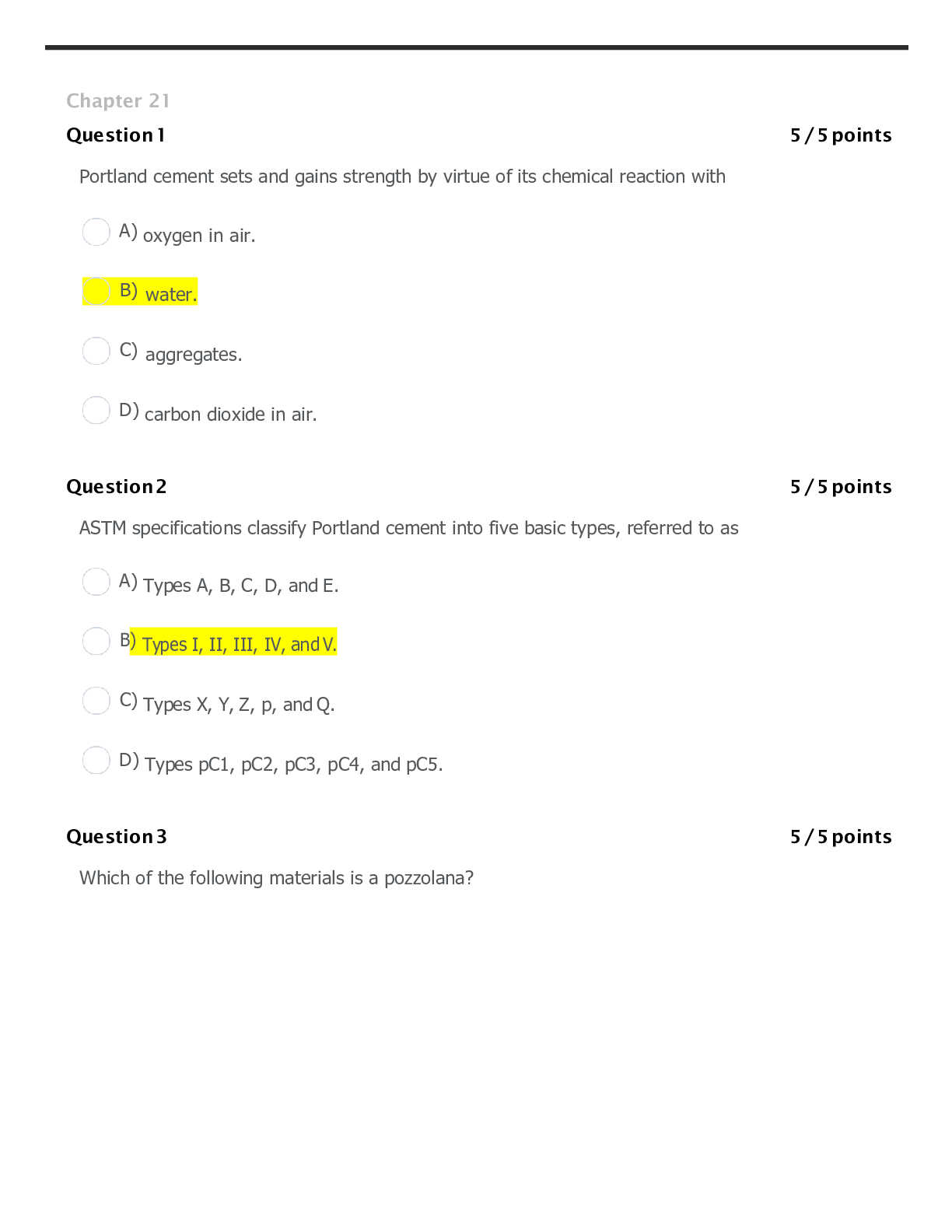
Buy this document to get the full access instantly
Instant Download Access after purchase
Add to cartInstant download
We Accept:

Reviews( 0 )
$3.00
Document information
Connected school, study & course
About the document
Uploaded On
Oct 11, 2019
Number of pages
7
Written in
Additional information
This document has been written for:
Uploaded
Oct 11, 2019
Downloads
0
Views
58

